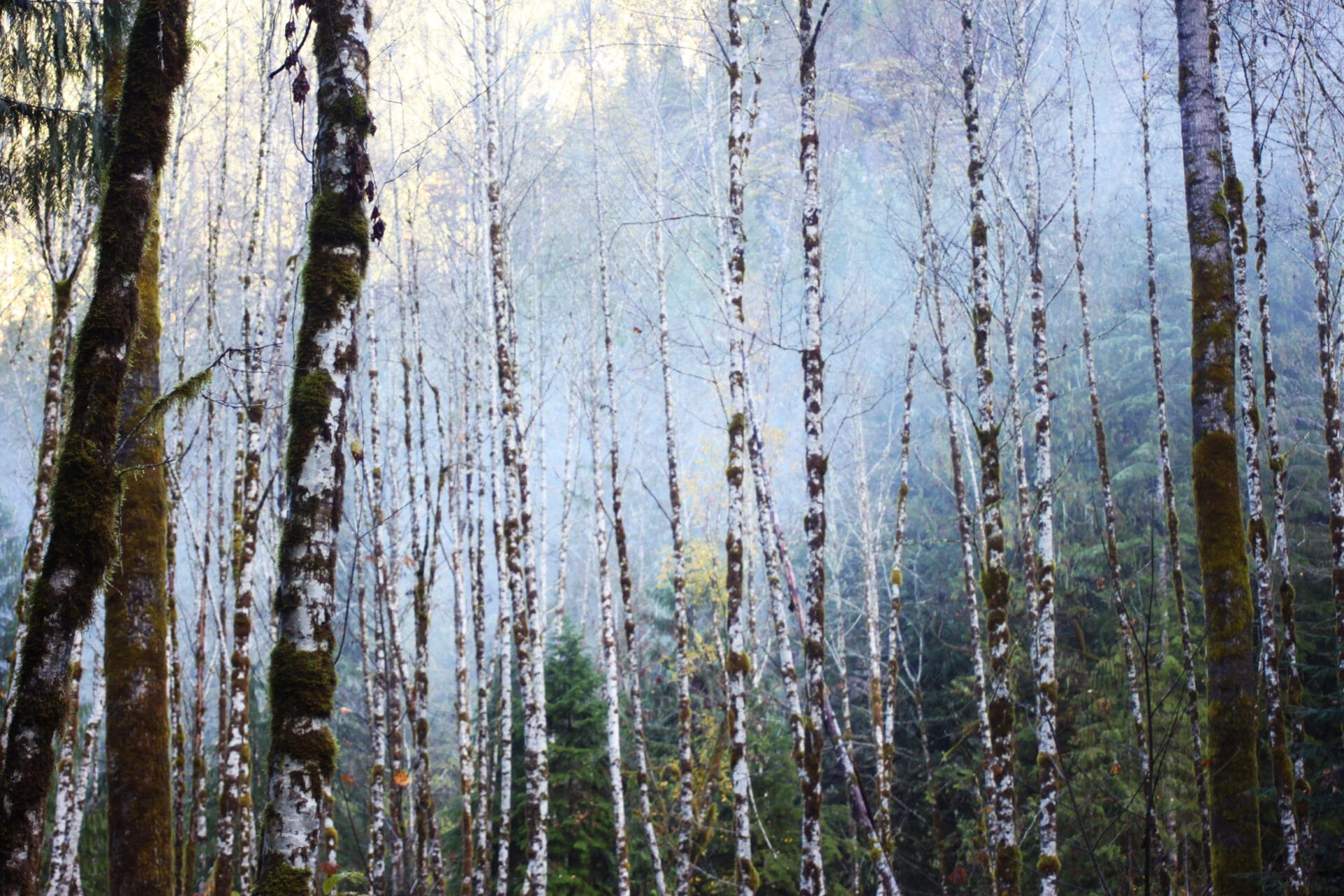The eyes, voices, and teachings of the FIRST PEOPLE of these lands impart understanding of the Heritage Area from time immemorial to the present day.
Among the Salish people, Indigenous teachings hold that a people were created with each river to live, fish, hunt, and to care for that river for all time. Since time immemorial, native people on both sides of the Cascades fished for salmon, hunted deer and elk, and gathered and tended to berries and native plants for food and medicine. From their home villages, native people traveled widely across their territories, tracing the seasons as they stewarded the bounty of the landscape. Families and villages were connected by ties of marriage, language, customs like potlatch, and trade gatherings such as those at Che-lo-han in the present-day Kittitas Valley.
Trade was an important dynamic among native people who travelled extensively along the waterways, and through the valleys and mountains passes of the Greenway landscape. Native people plied the rivers and waterways of Puget Sound in cedar canoes. Well-established routes linked the Puget Sound Lowlands and Columbia Basin across Snoqualmie Pass. These were part of a sophisticated network of trading routes and trading centers that connected native people across the entire continent. These same routes would be taken advantage of for the highways and railroads that are used for travel and trade across and beyond the Greenway NHA landscape today.
When the United States government sought to exert control over territories in the Pacific Northwest, it promised tribes certain assurances and compensation in return for tribes ceding almost all of tribes’ traditional lands. Many, though not all, tribes and bands in the Greenway NHA landscape relocated to lands reserved at Tulalip, Muckleshoot, Yakama, and Colville though these reservations did not provide adequate space for all tribes who signed the treaties. The Snoqualmie Tribe was able to establish its reservation by buying back land after regaining federal recognition in 1999. Despite the US government’s persistent and systematic efforts to extinguish tribes’ culture, ways of life, self-governance, and existence, tribes maintain these to this day while defending treaties, executive orders, and federal recognition. While these mechanisms fail to fully compensate or mitigate for the tragedies and losses suffered by native peoples, they are today, nevertheless, valuable legal mechanisms that provide varied recognition of tribal sovereignty, rights to fish in usual and accustomed places, and to hunt and gather off-reservation.
Through millennia of experience, tribes possess sophisticated knowledge and understanding of how to manage the lands and waters of the Greenway. They know where and when to hunt, fish, and gather, and traditionally used fire and other active approaches to maintain habitats for favored game and plants. Tribes defended their fishing rights in the “Fish Wars” of the 1960s and 1970s, eventually affirming tribal sovereignty as co-managers of fish resources in the state. Today tribes continue to serve as leaders in the protection of natural resources and maintaining and recovering healthy ecosystems. They exercise their rights and apply their knowledge to conserve and restore salmon populations, and to restore and maintain ecosystems under intense pressure from habitat loss, development, population growth, and climate change. Salmon restoration and the fight for tribal sovereignty continue throughout the Mid and Upper Columbia River where rights and land were seldom ceded.
Tribal Councils, through sovereign self-governance, safeguard their people, their rights, their way of life, and their ancestral lands. Sovereignty and self-governance have helped tribes survive the profound upheaval and impacts of settlement over the past 175 years and are vital for tribes to sustain their culture and way of life into the future. These activities have wider benefits for all people in the Greenway NHA and across the state as tribal governments play leading roles in preserving cultural and natural resources, and as tribes have deep-rooted knowledge of the ecosystems of the Greenway and surrounding regions.
It is important to recognize indigenous concepts of relationship to the natural world that differ from western perspectives, including, for example, a non-hierarchical view of nature, nature’s inherent values and rights to exist, and concept of ‘reciprocity’ that may lead to different approaches to the land management. The Greenway NHA provides an opportunity to educate people about these foundational understandings, particularly through the interpretation of NHA stories and resources. Continued and closer dialogue with tribes and government agencies is essential to understanding how these concepts are best applied on the landscape.
Learn More
We encourage you to visit the websites of each of the five tribes within the Greenway NHA to dive deeper.


